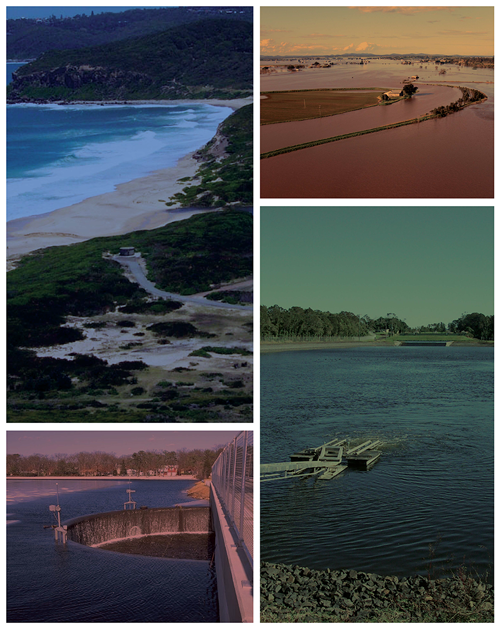Project Updates
Project 6 – Loss Models for Catchment Simulation- Rural Catchments
The Stage 2 report on Loss Models for Catchment Simulations – Rural Catchments is being released for industry comment. It involves a pilot study on a limited number of catchments that trials potential loss models to test whether they are suited for parameterisation and application to design flood estimation for ungauged catchments . A range of conceptual loss models were considered for application to rural catchments and the following 4 models are considered most suited for further development for design flood estimation in Australia:
- Initial loss – constant continuing loss
- Initial loss – constant proportional loss
- Initial loss – variable continuing loss
- Probability distributed storage capacity loss model
The careful extension of the study to a larger number of catchments should provide the best opportunity to link the derived loss values to catchment characteristics; a link that has in the past proven elusive. Download Report
Project 1.3 Stage 3 – Rainfall Intensity-Frequency-Duration (IFD) Relationships under Climate Change
Human-induced climate change has the potential to alter the prevalence and severity of rainfall extremes, storm surge and floods. Recognition of the risks associated with climate change is required for better planning of new infrastructure and mitigating potential damage to existing infrastructure.As part of stage 3 funding for the Climate Change component of Project 1 was received (over 1 million dollars). The project official started with an inception meeting last month between the project team including CSIRO, BoM, University of Adelaide, and UNSW.
The goals of the project are to:
- Quantify possible changes and uncertainties in rainfall intensity-frequency-duration (IFD) curves due to anthropogenic climate change.
- Provide interim advice to practitioners on how these changes can be included into design and planning decisions.
In this project, the main objective will be to provide interim advice to practitioners on how possible changes in the magnitude and uncertainty of rainfall IFD under anthropogenic climate change can be incorporated into design and planning. In order to estimate these potential changes, IFD curves for the current climate will be compared to IFD curves estimated for a future climate. Current IFD curves will be generated using different regional climate models and alternative statistical methods, and they will be benchmarked against the IFD curves currently being prepared by the BoM as the baseline.. Any differences between the generated IFD curves and those prepared by the BoM will be investigated for systematic errors and, if there are biases, the generated IFDs will be corrected to be equivalent to the AR&R IFDs.
The project will also include two sub-components that will focus on (a) assessing whether sub-daily rainfall in the study region is non-stationary and (b) using a combination of station and radar data to evaluate the how well dynamically downscaled output reproduces the spatial extent of observed rainfall extremes.
The project will focus on the greater sydney region due to availability of data. A future stage will focus on South East Queensland.
Report Review Process-
The Revision team is committed to producing a quality project for industry. As part of the revision process has been developed where reports are reviewed by the Technical Committee as well as Australian and International reviewers. The following reports are undergoing the detailed review process prior to release to the industry for comment and are expected to be released soon.
-Project 2 – Collation and Review of Areal Reduction Factors from Applications of the CRC-FORGE Method in Australia
General Updates
Call for Reviewers
Those interested in reviewing projects should email [email protected] or [email protected] briefly describing which projects they are interested in reviewing and what qualifications/experience they have in those practice areas (please include a brief CV).
Australian Rainfall and Runoff has joined LinkedIn. Join the group for discussions and updates on the revision of Australian Rainfall and Runoff.



Leave a Reply